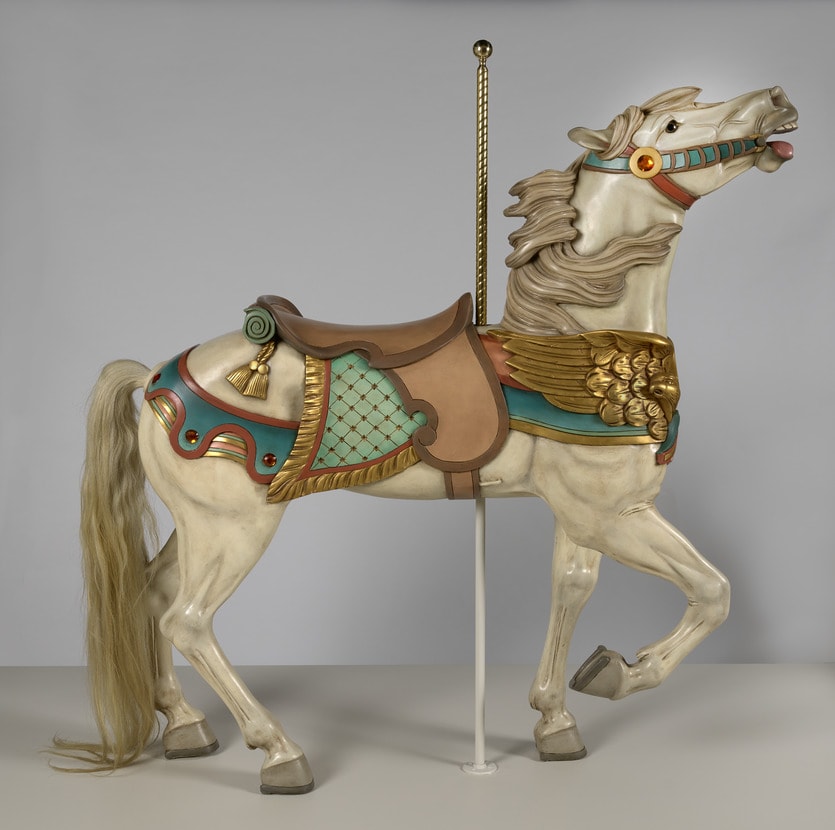
- Artist/Maker:
- Charles Carmel
- Bio:
- American, b. Russia, 1865-1931
- Title:
- Carousel Horse
- Date:
- c. 1914
- Medium:
- Carved and painted poplar wood and horsehair
- Dimensions:
- 61 × 64 × 28 in. (154.9 × 162.6 × 71.1 cm)
- Credit Line:
- Gift of Larry and Gail Freels
- Accession Number:
- 2020-62
Not On View
Carousels were being widely carved in England and Germany well before they became popular in the United States toward the end of the nineteenth century. Charles Carmel and Marcus Charles Illions were among the many Jewish carvers who fled antisemitism in Eastern Europe. Having honed their skills carving symbolic animal imagery for synagogues, they ultimately found their way to the United States. For these artists the robust carousel industry of the period proved to be the perfect outlet for their extraordinary gifts.
Charles Carmel trained in wood carving as a young man in his native Russia. He was steeped in the Eastern European Jewish tradition of carving intricate wooden Torah arks, replete with lions, deer, eagles, and other emblematic animals. This magnificent white horse was created by Carmel—by the early twentieth century a renowned carver of carousel horses in the United States—in what was later known as the Coney Island style. The highly naturalistic rendering of the horse is characteristic of Carmel, whose steeds were strong and aggressive with windswept manes, open mouths, and batwing saddles. The artist settled in Brooklyn and soon began applying his skills to the crafting of carousel horses at various workshops.
Charles Carmel trained in wood carving as a young man in his native Russia. He was steeped in the Eastern European Jewish tradition of carving intricate wooden Torah arks, replete with lions, deer, eagles, and other emblematic animals. This magnificent white horse was created by Carmel—by the early twentieth century a renowned carver of carousel horses in the United States—in what was later known as the Coney Island style. The highly naturalistic rendering of the horse is characteristic of Carmel, whose steeds were strong and aggressive with windswept manes, open mouths, and batwing saddles. The artist settled in Brooklyn and soon began applying his skills to the crafting of carousel horses at various workshops.
Information may change as a result of ongoing research.